About Us

Martin De Porres
A History of Service
by Dr. Ed Dana
- Welcome!
- What’s it all about?
- Martin De Porres -The Early Days
- Our Leaders:
- Our Friends:
- Remember those who have gone before us
Welcome!
This is a really good story! But, before I tell
it, I want to talk about the subject of history. To many, history is
exciting. However, many disagree or believe it to be dull. “What’s the
big deal?” they would say. Personally, I disagree with the latter,
particularly when it comes to a favorite subject of mine; the Martin De
Porres School for Exceptional Children (MDP).
I remind
nay-sayers that “History Is Alive”. The past influences us every day. It
helps to define the present. It informs our choices and decisions.
With that being said, please take a few minutes to read our history. At
the very least, I hope it is informative and at the very best I hope it
is inspiring. As I mentioned earlier, it is a really good story and well
worth a few minutes of your time spent. I promise!
As you read
our history, many themes run through it. They are hope, faith,
resilience, grit, courage and joy. At its essence, our story is about
two things. The first being about a group of committed people who
believed that together they could impact the lives of marginalized kids.
These folks shared a vision that through education, each child can
reach his or her fullest potential. The second is about a group of
children and families who choose to journey with us.
At MDP, children with emotional/behavioral concerns are central. Historically, in the educational system, they have been marginalized. We at MDP understand this reality. This awareness led us to commit over forty years of service to them. At MDP, every child has a home; no one is left behind.
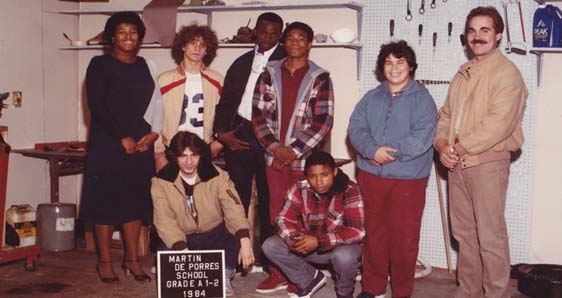
The Martin De Porres School – What’s it all about?
If one
asked the question “What is MDP?” he or she would be told: "MDP is a
dynamic and innovative educational community where educators
continuously adapt to meet to the changing needs of our students." If the second question asked is “How do you do it”? we would say: "First, we form relationships of trust and support. Second, we maintain a safe and structured environment in which all kids are accepted and loved. Third, we ensure that our students develop competence in academic, social, emotional and vocational domains. Most importantly, we help all children who pass through our doors develop resilience."
The last question asked would probably be “Why do you do it”. That answer is simple. "From humble beginnings over forty years ago, we have dedicated ourselves to marginalized children with emotional/behavioral concerns who were seen as “lost children”. From our inception, we vowed never to let another child be lost. We are grounded in the belief that education is the best way to achieve this goal."
Martin De Porres -The Early Days
The 1960’s and 1970’s
were a time of tremendous social, political and cultural turbulence.
Every segment of society was shaken by the events of the times.
Education was no different. Many questioned its efficacy and, in
particular, the fair and equal distribution of resources and services.
Children with emotional/ behavioral concerns were historically
underserved. Those who were chronically aggressive, impulsive, tolerated
frustration poorly, oppositional, verbally and physical aggressive,
suffered mental health issues had few options. As a result of the
management difficulties that they presented, many were removed from
school. One could claim that these children’s civil rights were being
violated by apparent systematic exclusion from school. In America,
access to education is a fundamental right. It was a travesty that this
situation existed.
Around this time (1970), the founder of
Martin De Porres School, Bill Jesinkey was serving as a guidance
counselor in PS 4 which was a “600” school run by the New York City
Board of Education. A “600 school” was one that served students with
emotional/behavioral concerns. Bill spent his days with these kids and
knew their struggle. He also knew that many of these students had been
or were being excluded from school. He was angry. He was frustrated. He
was also motivated. Together with child advocate, Jane Stern, they
published “Lost Children” a groundbreaking descriptive study of
students with emotional and behavioral disorders.
Bill’s efforts did not simply stop with this publication. His next step was to take action. In 1972, with a grant from the Criminal Justice Coordinating Council, he secured space in a Dutch Reformed Church in Astoria where the first school program for these “Lost Children” was housed.
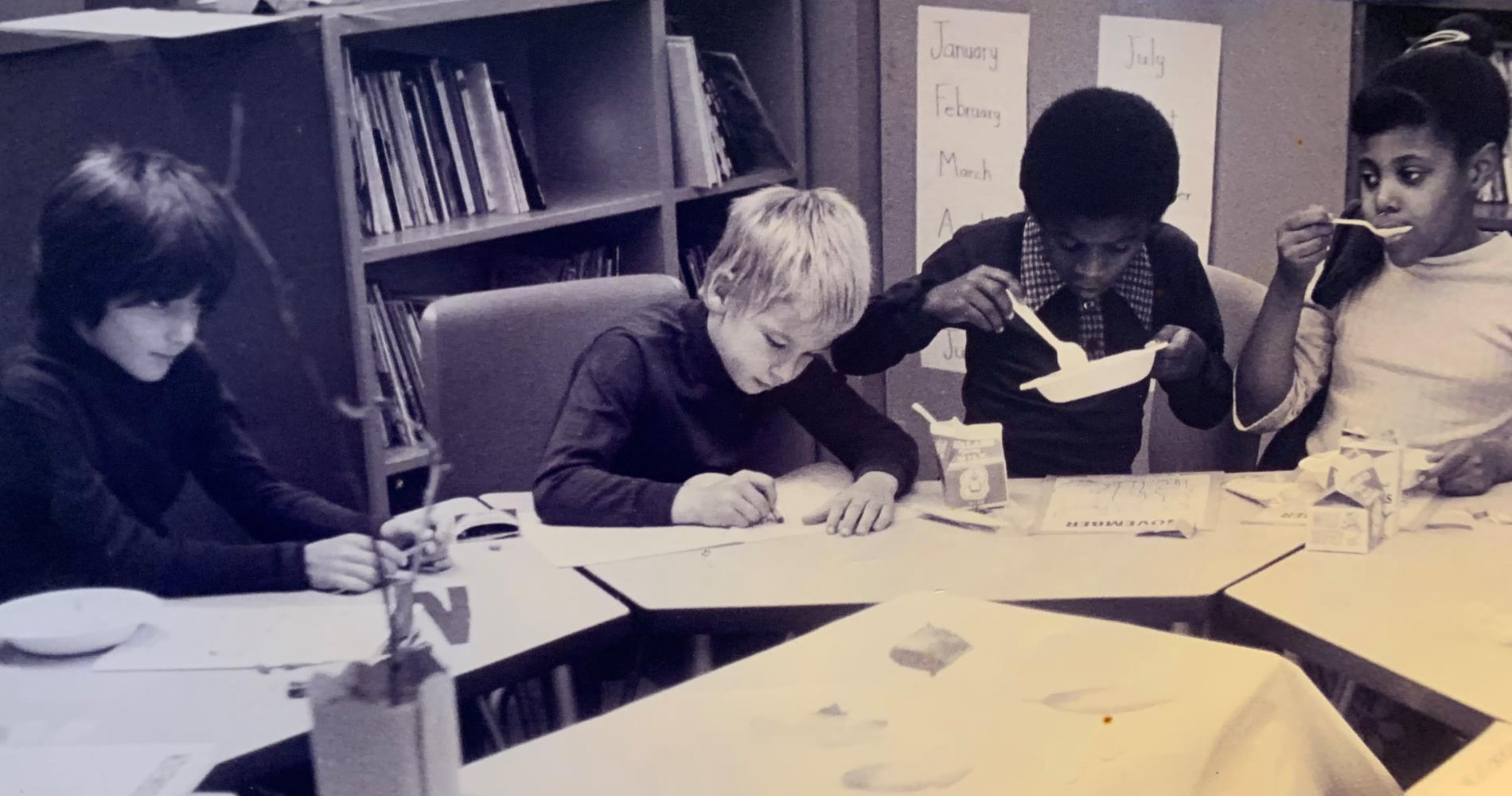
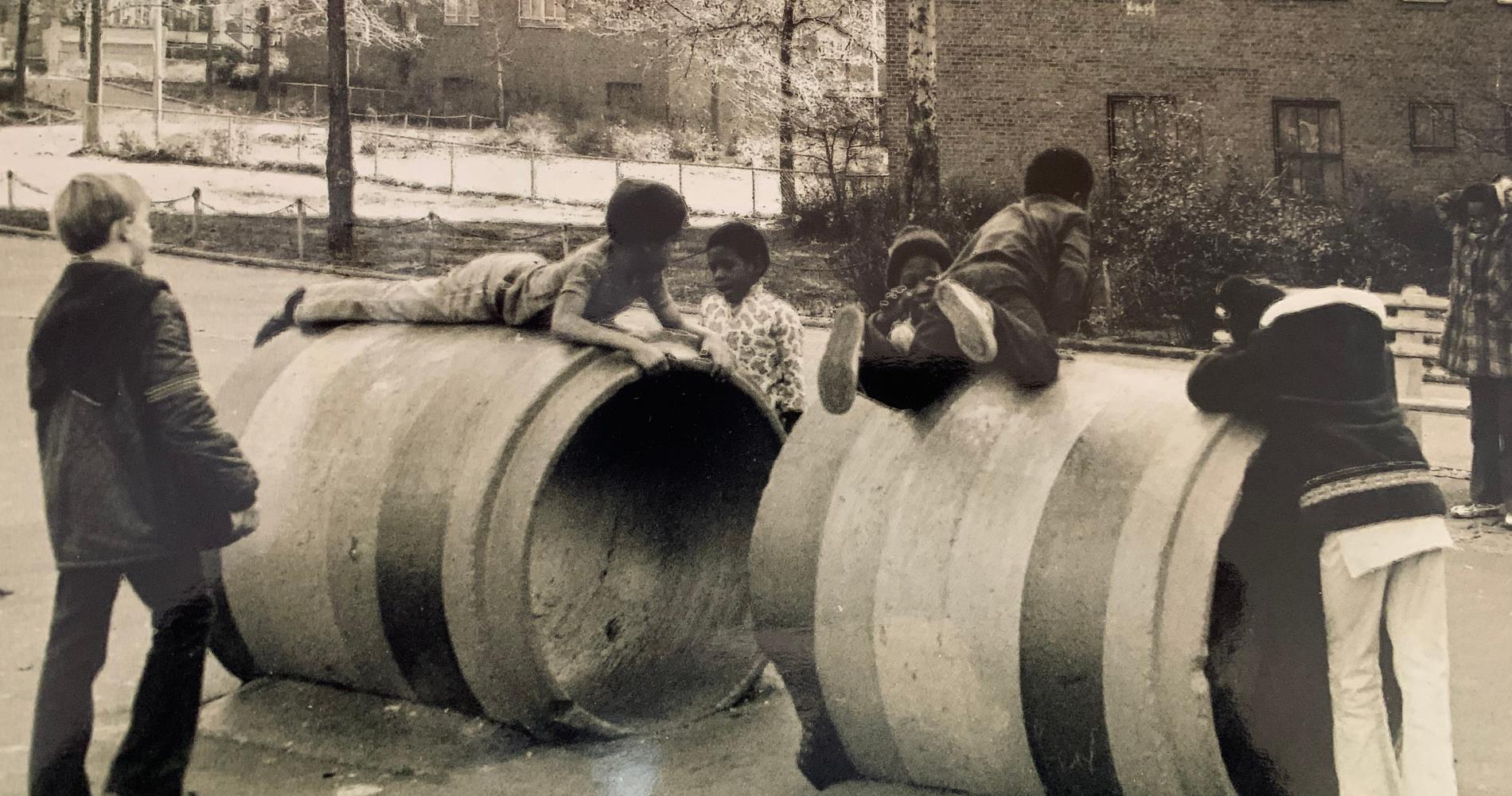
Who would teach these students?
Coincidentally, one
of Bill’s graduates who had advocated for himself and was accepted into
Mater Christi Diocesan High School with the support of Br. Paul Goodwin,
the Principal. Bill was shocked to hear that one of his kids could get
into such a prestigious private high school. Bill made inquiries about
how this had happened. Discussions began among Br. Paul Goodwin, Br.
David Detje and Br. Ray Blixt which lead to the creation of a pilot
program at Mater Christi High School for a small number of special needs
students, some referred by Bill, who would be taught by a volunteer
group of the school’s best teachers in a way that would integrate these
students into the mainstream of the high school.
The
serendipitous connection of Bill’s, other local special needs students
and the De LaSalle Christian Brothers (a.k.a – Brothers) at Mater
Christi High School lead to several of the Brothers upon leaving Mater
Christi to join Bill in his new venture. David Detje, Paul Fantetti, Tom
Darnowski, Phil Rofrano and Ray Blixt accepted an invitation from Bill
to join him in a new and untried educational venture called A.S.F.E.C.
(Alternative Solutions for Exceptional Children). Bill envisioned an
elementary school, a residence, and a child advocacy component
integrated under one umbrella. This way, the diverse needs of these kids
that were often met in a fragmented manner between the complex
educational and social service network of programs in New York City
would be met.
As a result of its initial success, the school soon needed larger quarters. It moved to the Martin de Porres Community Center located in the Astoria Houses. From this, the school took the name of the community center because it had a great reputation and was recognized in the community for its good works.
Br. Ray Blixt became principal. Tom Darnowski would handle the complicated process of intake and child advocacy. Br.Phil Rofrano and Paul Fantetti became the heart of the teaching staff with help from some of their former students, Harry Jackson and Chet Tolbert and Sister Marguerite Critchlet, OP from Mater Christi High School.
As they became immersed in the day to day operations, the program grew. It soon became apparent that extra help was needed. Around this time, teachers Gail Quinn and Ron John joined the staff. Gloria Aloise, a secretary from Mater Christi High School was enticed to join them, as were community residents Louise Parks, Delma Crump and Walter Key. Ellen Dorsey joined first as a paraprofessional later becoming a Language Arts teacher. In a short period of time, the school had a well-rounded and caring staff as they moved forward with an innovative school model.
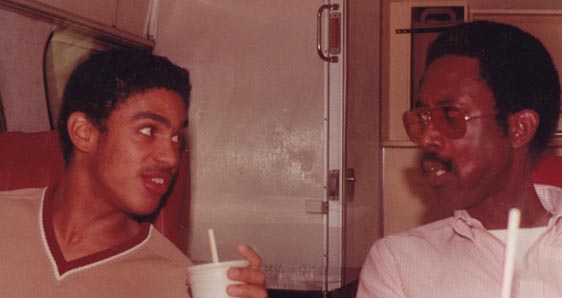
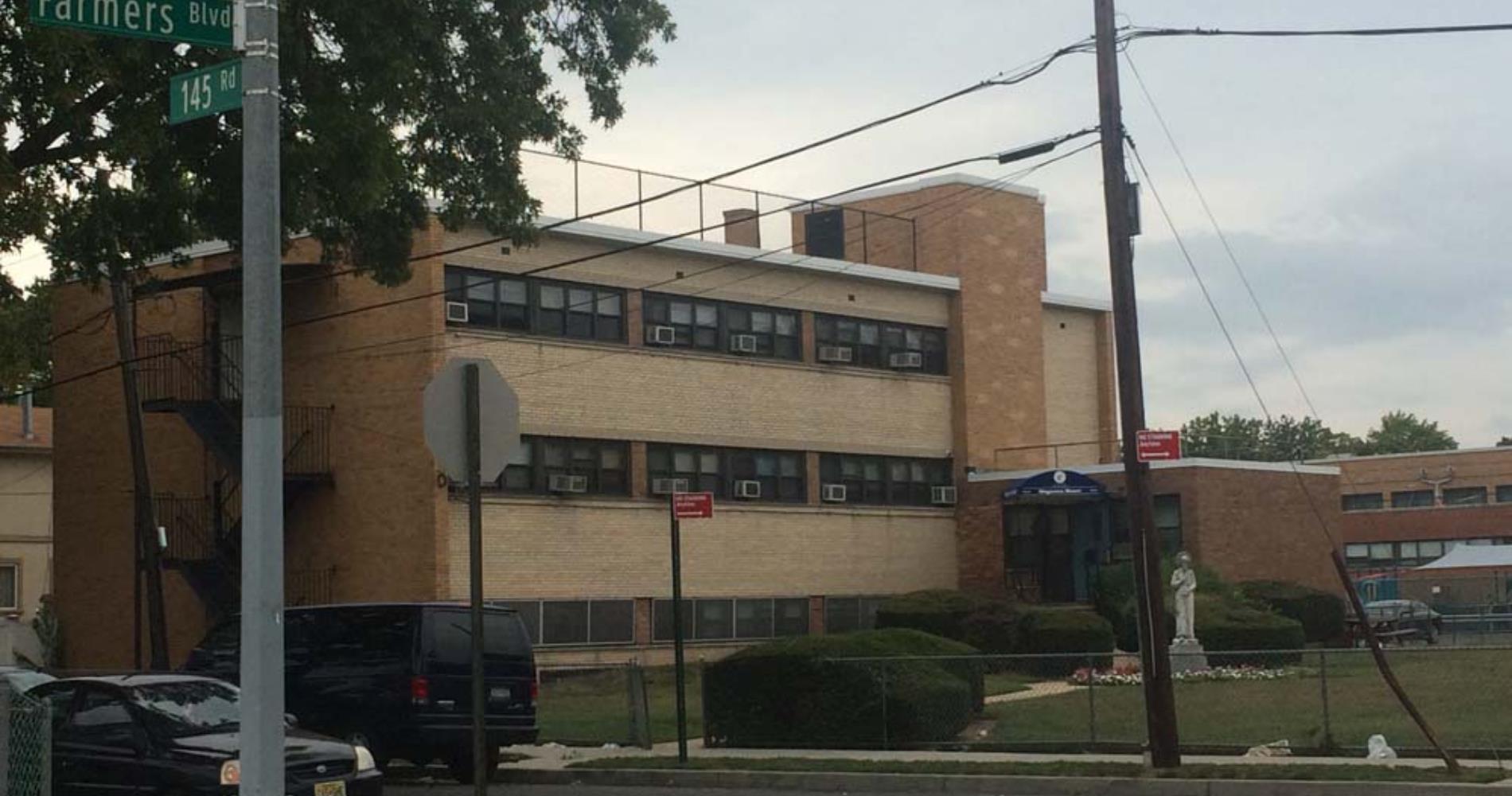
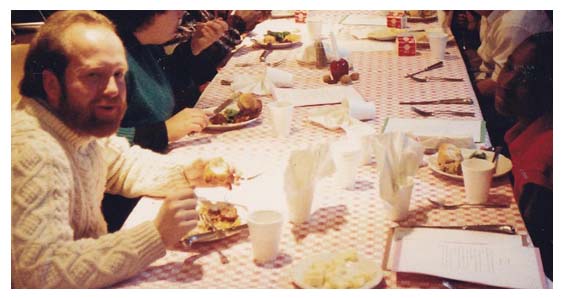
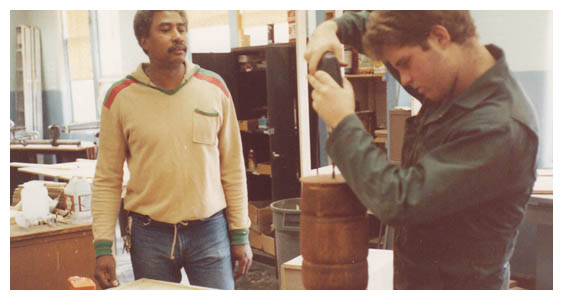
What do I mean by this statement? In most cases our kids are exposed to complex social, cultural, emotional, familial and racial and gender-based challenges. Many of MDP’s children have to face overwhelming obstacles daily. I marvel at their resilience. And, I marvel at their families who are determined to secure the best services for their children.
We are honored to work with these children. However, our work goes far beyond the basic teaching of academic subjects. We joyfully embrace the opportunity to help children grow. We respectfully partner with our children’s families to help them cope with any challenge and we do our best to connect our families with effective services for their children.

Our Leaders:
MDP has been fortunate to be led by strong,
committed directors over the years. Bill Jesinkey, our founder was the
first executive director. Bill established MDP and set a tone for
educational excellence. One of his greatest gifts was instilling in his
educators the significance of advocacy. Bill would tell us “if we don’t
stand for our kids, the chances are that no one will”.
Br. Ray
Blixt became director building upon Bill’s vision. Ray left in 1978 to
be succeeded by Paul Fantetti. Paul contributed to MDP in immeasurable
ways. He instilled the concept of “best practices” in academics. His
efforts propelled us forward and he set the high standards to which MDP
still holds. In particular, Paul’s sensitivity to the psychological and
emotional needs of our students solidified a commitment to continually
refine and enhance the quality of clinical services.
In 1986,
Br. Stephen Tuohy was named director. Stephen’s tenure is marked by calm
and measured stewardship. Steve set MDP on solid footing in terms of
operations and structure. His leadership continually demonstrated the
virtues of prudence, wisdom, vigilance and zeal. He emphasized the
importance of technology and the performing arts as a major part of an
effective educational program for our students. He set an example that
all directors should follow.
In 2008, answering the request by the Governor and New York State Education Department (NYSED) to establish more in-state educational residences, the MDP Casa De LaSalle opened in Ozone Park. Casa de LaSalle serves twenty-four young men aged 13-21 needing residential services to be able to insure the attainment of educational goals within a community setting. Alan Karpf, a retired New York City Department of Education special educator and principal was the first program director. Through Alan’s stewardship, the “Casa” program was developed. Assisting him were Eon Parks, Director of Education, Ty Hopkins, Residential Director and Joe Trainor, Clinical Director.
As the student population grew, so did the number of employees. In 2000, about 60 people were employed. By 2011, two hundred sixty people comprised the MDP staff in positions ranging from teachers, teaching assistants/aides to related service personnel (social workers, guidance counselors, occupational therapist, physical therapists, speech teachers) to maintenance and kitchen staff to a full compliment of business professionals. The expansion of the Martin De Porres School was remarkable and somewhat unprecedented in the non-public school sector.
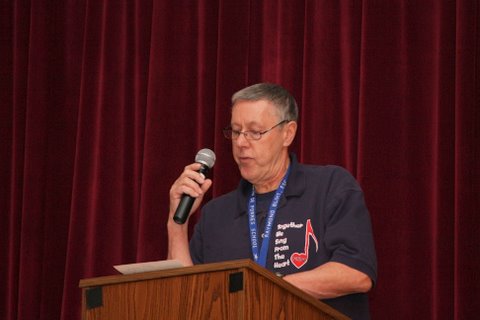

Shortly after the high school’s consolidation in the Rockaway Park, MDP faced one of its greatest challenges. Super storm Sandy struck New York City with unprecedented force. The high school in which we had only been residing for two months, faced utter destruction. At least two million dollars in damage occurred from flooding rendering the building unusable for six months. We were able to locate the students to the former site at St. Pius X in Rosedale. It is an understatement to say that this was traumatic. With commitment and patience, the MDP school community able to persevere. Gratitude goes to Ms. Jo’Anne Brancato, principal at the time, for her leadership and to the staff that never quit. Needless to say, we were able to return to the restored high school by April 2013, where the high school program thrives today.
Our Friends:
The Martin De Porres School has been blessed
to have the support of many organizations. As mentioned earlier, the De
Lasalle Christian Brothers have been a part of MDP since our
beginnings. MDP though remaining a governmentally funded non-public
school has had the long-standing support of the “Brothers”. Initially
recognized by the De LaSalle Christian Brothers Long Island – New
England Province that in 2010 combined with the New York, and Baltimore
and Quebec Provinces to form the District of Eastern North America
(DENA), we continue to be a part of the Lasallian Tradition of
Education. This tradition stretches back over three hundred years. Its
emphasis continues to be the central role of education in helping each
child develop his or her fullest potential, especially those children
experiencing poverty.
The Lasallian influence has informed the
development of our educational community. Many staff members have
voluntarily participated in such Lasallian events as the Heuther
conference, the Buttimer Institute of Lasallian Studies, the former
Lasallian Leadership Institute renamed the John Johnston Institute, the
Lasallian Social Justice Institute and have attended Young Lasallian
conferences. MDP is a proud member of the Lasallian Association of
Family and Youth Services (LAFYS) and the Lasallian Association of
Secondary School Chief Administrators (LASSCA). Every year, MDP is
grateful for the opportunity to sponsor Lasallian Volunteers. These are
recent college graduates who spend a year or more working in schools or
agencies sponsored by the De Lasalle Christian Brothers. It is quite
clear that the “Brothers” are part of MDP’s fabric. In fact, three
“Brothers” continue as part of our staff: James Loxham, Joe Garito and
Kevin Finn serve as educators and administrators. Brothers Edward
Shields, James Martino, Louis De Thomas and Mike Reis currently serve or
have served on the Board of Directors.


Among Martin De Porres other friends are the Sisters of Saint Joseph
(CSJ) who are headquartered in Brentwood, Long Island and whose support
is invaluable. Sr. Mary Walsh, CSJ served both as Board member and as
Chairperson of the Board of Directors for many years. She skillfully
oversaw the transfer of leadership in 2011. Sr. Eileen Kelly has also
been a long serving Board member. Sr. Maryann Crimmins managed the MDP
Human Resources Department from July 2011 to her untimely death in
October 2012. Sr. Maryann was a beloved staff member who made a great
impact in a brief period of time.
The Sisters of Saint Joseph
are our current landlords at the high school in Rockaway Park. When
Super storm Sandy struck, they were committed to getting the school up
and running in a brief period of time. This was no small task. MDP is
honored to continue the long-standing tradition of educational service
to children that was begun by the Sisters of Saint Joseph on the
peninsula years ago. That spirit continues today at the Martin De Porres
High School.
Throughout the years, we have also had the
privilege of working with members of the Congregation of Dominican
Sisters of Amityville, Long Island. Sr. Marguerite Critchlet, mentioned
above, Sr. Barbara Sussman, Sr. Barbara Kritchnak and Sr. Mary Sullivan
all made great contributions. Social Worker Sr. Joanne Walters, worked
side by side with us for many years and was essential in establishing
the clinical component of our program.
The Daughters of Wisdom (DW) as well are great friends of MDP. Sr.
Evelyn Lamoureux, our present Chairperson of the Board of Directors and
long time board member has provided exceptional leadership to the
school. Presently, Sr. Fabiola St. Jean (DW) and Sr. Marie Josee Seide
(DW) work in our administration offering commitment and service. Sr.
Evelyn Eckhardt DW is a recent addition to our Board of Directors. Sr.
Marylyn Soeder (DW) joined our staff in 2013 and has made a great
contribution as a Social Work Supervisor.
Not to be forgotten are
the Montfort Fathers and in particular Fr. Gerald Fitzsimmons, our
landlords at the Casa De LaSalle in Ozone Park. They are always helpful
in every way. Finally, special thanks are given to the Diocese of
Rockville Center and the Diocese of Brooklyn and Queens. For many years,
we have worked with such fine pastors as Fr. Willie Gomes, Fr. Raymond
Dundon, Fr. Jeff Dillon and Msgr. Jack Maloney who are or were deeply
committed to the mission of MDP.
A pause to remember those who have gone before us
What has made MDP such a special place are the students and staff who have been a of a part of us. Sadly, we have lost some of these friends over the years. Below is a list of their names that we carry in our hearts.
Gloria Stein
Manny Grey
Millie Jones
Kelly Williams
Sr. Maryann Crimmins
Charles “Chet” Tolbert
Charlie Sevilla
Alonso “Lonnie” Denson
Pete Mentrie
Jeff Leguerre
Lenny Screen
Bill Jesinkey
Br. Leo Kane
Thomas Spragon
Jimmy Dolciotto
Dowayne Henry
Br. John Lindhardt
Alumni:
Jesse McKinnionJohnny Banks
Gerson Alverez
Beverly Sandford
James Murphy
Dontay Baron
Ramel Harris
Tilford Deas
Michael Demetrius
Lisa George
Joseph Bernazard
Dorothy Robinson
Heyward Patterson
Raymond Lamb
Sam McMillan
Anya Muse
Corey Foster
Scott Schulman
Eddie Watkins
Pauline Melendez
Alex Figueroa
Franklin Cely
Matthew Hodges
Bilah McGraw
Marzet Hall
Professional Affiliations
MDP is proud to hold an
accreditation with the Middle States Association of School and Colleges
(expired). We are also members of the Interagency Council of
Developmental Disabilities Agencies (IAC), the 853 coalition of COFFCA
and we enjoy a covenant relationship with the District of Eastern North
America of the Brothers of the Christian Schools.
Summary
If you are still reading, I want to thank you for following my advice earlier. I hope that MDP's history has been informative and gives you a sense of our work. As MDP moves to the future, we will continue to educate our students with the same gentleness, generosity, humility and zeal: virtues that have been our hallmark for over forty years.
